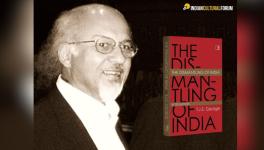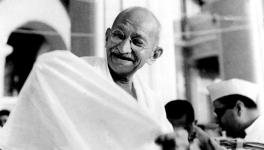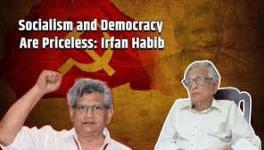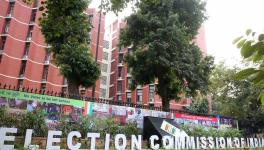For India’s Tribes, Democracy Also Means Resisting Alienation
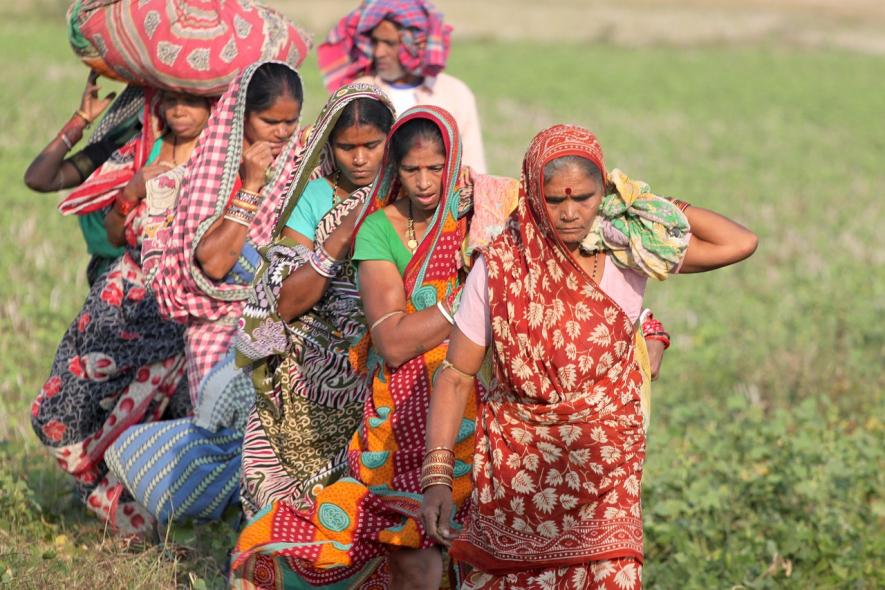
Image Used for Representational Purpose Only
Indian democracy has been intensively analysed, debated and criticised. However, in India, democratic values, ways of thinking and practices are considered almost irrelevant. Democracy is limited to voting and government-formation. A democracy may not be electoral, but it can still be focused on social justice and fulfilling needs. What else is a democratic method, if not one that removes social, economic and political injustices?
India’s tribals are the most-affected section of the prevailing democratic model. The Constitution is unambiguous that the resources of Adivasis are to remain under their management and used for their livelihoods. Yet, the centre of gravity of the Indian economy has shifted to the intermediate class groups. The class hierarchy has fostered an economic polarisation between rich non-tribals and those tribals who are largely alienated and displaced from their lands.
One, powerful non-tribal leaders have emerged within political parties at the Centre and states, and drastically altered the mosaic of Indian federalism. Two, regional parties today play a significant role in the Indian political process, in which the state has shifted its orientation from welfare to the market, in a liberalised and globalised era. Both these processes have supported growing inequality as a small, rich class alone reaps the fruits of growth. Growing inequalities of opportunity add to poverty, but this seldom threatens any system: only growing inequality in a milieu of rising democratic and human rights is a potentially grave danger.
After Independence, our political leaders recognised the need for the entire population to participate in democracy, but it is the rich western-educated leaders from feudal backgrounds who became leaders. This scenario began to change only with the political mobilisation of the Dalits. Even this has not heralded true democracy—rule of the people—rather than of the rich and powerful. There must be economic, social and political equality. In other words, only an egalitarian society can be truly democratic. The precondition is equal access to means of production, not only to expand productive forces but also enable and ensure every individual achieves their creative potential. Naturally, if high growth can be created by a few, then growth will be higher if all realise their potential. But this calls for a new vision and development strategy for democracy from below.
Instead, Indian democracy is marked by political inclusion and economic exclusion. The Panchayati Raj or PESA Rights Act or the Forest Rights Act are not proving sufficiently reassuring as regards land, water, forest, cattle, credit and market resources, which are still controlled by a handful of wealthy non-tribals. The philosopher Michel Foucault had noted that disbursed power is difficult to tackle. That is, without economic democracy, socio-political democracy cannot be realised. The first law minister BR Ambedkar had also warned that if democracy is not real victims of the system will overthrow the Constitution which the Constituent Assembly had laboriously built.
Our system permits individual inclusion, even if it results in the exclusion of groups. This phenomenon is most obvious in the social electorate, where competitive politics and a competitive economy built on a caste-based, hierarchical social and economic scaffolding co-exist in mutual unease. Transiting from the state capitalism of the planning era to the market capitalism of the liberalisation era has only skewed opportunities and reinforced old prejudices.
Even producers of knowledge like the media are controlled by non-tribal wealthy upper-class elites who sit in judgement of the quality and efficiency of the Adivasis and other subalterns. There is nominal representation of non-elites, who lack power to influence policies and structure knowledge. They remain silent, and thus safe, so long as they do not raise and debate social issues. Corruption is part of this structure too: scheduled tribe sub-plan budgets are siphoned away by non-tribal bureaucrats, fostering more inequality and corruption in an already unequal system.
Equality was accepted as a goal when the Planning Commission was launched. Yet the present scenario is characterised by the overuse of globalised terms such as “tribal empowerment” and “sustainable development”—not “equality”, “liberty” and “justice”. The choice of language is not delinked from the policies and programmes that are the reason for their distress. The state uses force to suppress movements that resist these policies. Meanwhile, NGOs and the government work with the primary aim to depoliticise tribals and abet policymakers: what is beneficial to a few is presented as beneficial to all.
The poor tribals, whose immediate concern is their next meal, are seldom concerned with policies, competition or profit, while the state uses these tools to back private takeover of public resources. Since the 1970s, tribal movements had surged in Andhra Pradesh, while the new state of Telangana is also witness to a major rise in tribal movements. Tribals alienated from their land, who were protesting for their right to Jal-Jungle-Zameen (water, forests, land) have been jailed. So, the displaced indigenous people, who have been denied their land rights, do not even have the right to protest now. The state’s attitude towards tribes is inhuman and violates human rights. Hostility over displacement has led to brutal state forces beating and killing even women and children. The bourgeois-democratic milieu fails to accept or understand this, for elite castes and their top leadership are not conversant with India’s socio-economic realities.
Most people are afraid of true democracy: what people have is the freedom to agree not to disagree. In this rule of the rich and powerful, even legislators are elected by people funded by the rich. Inequality leads to corruption, the gravest threat to the security of tribals. A non-threatening order needs to be put in place for true democracy to become achievable.
Historically, the Congress party took formal note of the tribals in 1946, on the eve of Independence. In the early phases of tribal planning, the dilemma was a need to balance the need for economic development of the tribals and continuing their possession of their precious lands. Following the advice of Verrier Elwin, the first prime minister Jawaharlal Nehru formulated five principles which either do too little or too much: 1) respecting tribal rights to land and forest; 2) encouraging tribal’s traditional arts and culture; 3) training tribals to enter administrative and development fields and limiting outsiders in tribal regions; 4) avoiding over-administration and multiplicity of schemes; 5) evaluating progress not in terms of statistics but quality of human life.
Yet, state governments never allocated a substantial budget for tribal welfare and development. It was only in the 5th Plan Period that the allocation under this head was hiked. And by the 1960s, the goals were forgotten and tribal development had become “a statistical problem”. The new consensus was that tribals would share in the general development taking place in the country. If central governments designed programmes, state governments would set up commissions suggesting changes, beginning with the commission set up in 1961 under UN Dhebar.
In the 1970s, the political dimension of tribal development became important as political leaders sought to either distribute the spoils of power to elite groups or to consolidate their [tribal] vote banks. During the 1971 parliamentary election, Indira Gandhi used the Slogan “garibi hatao”, and the Congress party’s economic policy took a left turn. In 1972, the Planning Commission prepared detailed guidelines for tribal development based on the “area development” concept. Thus, peripheral areas and growth centres often emerged as focal points for the exploitation of tribals.
In the eighties, the language changed, but the basic rationale did not: a top-down input-output model. Demands raised by tribal communities and tribal uprisings may alone force state governments to rethink their tribal policy.
The consequences of the development pattern imposed by the State since Independence has led to poor socio-economic conditions, land alienation, resentment and movements against non-tribals. The protective measures have ironically worsened the economic conditions of tribals and they are also experiencing social alienation, both of which fuelled recent tribal movements. The extensive exploitation of their rich natural resources, the decline of traditional activities without any viable alternatives, and their consequent marginalisation and exploitation as cheap labour has been accompanied by their alienation from agricultural land.
Macro-planning frameworks have meant that very little of tribal culture could be protected. Nor did it pay special attention to their needs. Hence, tribal progress and integration were challenges for the Congress since the early years. Tribal policies—and this is true beyond India too—largely stuck with the safeguards and special provisions in the Constitution, such as reservation of seats in the legislature, land transfer regulation and services. Some schemes were started to help tribals set up cottage industries, provide educational facilities, or irrigation etc. But Congress-run states were ambivalent. Many followed the rules of the Scheduled Areas and Scheduled Tribe Commissions established by the Centre in 1960 for a short period. However, by the 1960s, the notion of tribal development and economic development became synonymous.
The separation of natural resources from tribal communities can be understood in a more scientific way with the assistance of the theory of the concept of alienation. Alienation may be interpreted as a specific problem of tribals, where the growth model becomes the primordial source of exploitation and creates a society where exploitative relations exist. Alienation, as discussed by Hegel, was highly idealistic and not materialistic. However, Marx, in his book, Economic and Political Manuscripts, describes alienation as “estranged labour” and mainly focuses on exploitation in the context of a capitalist society. According to him, alienation fundamentally takes place in relation to property, involving involuntary surrender to another. It is through the process that the Adivasis became enemies of one another. Social relationships and conditions created an alien and hostile society. As we know, Marx assumes that both alienation and exploitation are marked features of a capitalist society. In this context, the idea of alienation applies to marginalised people, the Adivasis, those who are seen as disposable.
The political system of depending on capital, and land being in the hands of the corporates and multinational companies, has created structural inequities which are furthering social injustice. The structural inequalities implanted in the name of growth affect a large number of resources and entire Adivasi communities.
The ruling class has adopted a policy of development through modernisation, but the national economy largely favours economic growth, profits and surplus. The economy uses tribals for growth, not development. Once the lords of their resources, modernisation has alienated them from their land and resources without proper rehabilitation or compensation from the state or the corporate class. Adivasis are excluded from economic paradigms but included in terms of voting in politics because modern development in a capitalist society uses extremely unskilled backward tribal people—while rejecting their demand for land, water and forests. The shortcomings of this model are obvious from the poverty, health and educational status of tribals. Their exploitation in the name of development is what has led to various social and tribal movements.
Like class-based struggles against hegemonies, new assertions from forcibly displaced communities, destruction of the environment and natural resources, tribal uprisings for safeguarding lifestyles, strident defence of cultures, regional identities and nationalities. All these constitute a broad range of popular awakenings, protests and form the social basis of democracy from the early liberal defence of institutional spaces to the more radical assertion of civil liberties and democratic rights.
The resistance offered by the various movements and other tribal forces has impacted the state and dominant classes, resulting in some modifications in the position of tribals. The state, with all its repressive machinery, was compelled to adopt transitory liberal welfare strategies. Tribes, on the other hand, organised their efforts relentlessly to fight injustice and demand constitutional rights and socially valid recognition of their identity and existence.
The present ruling class and capitalist society in India uses extremely unskilled backward tribal, Dalit, and marginalised people. Adivasis are needed as voters, for its success depends on creating a tyranny of the majority. Yet tribals are excluded from economic paradigms, and this shortcoming comes through in the statistics displaying their poor health and educational status. This exploitation in the name of development has led to various social, trade union, civil-society, Dalit, and Tribal movements.
The present regime’s motto is to adjust people to their oppressive environments. The oppressed, once every five years, decide which representatives of the oppressing class should enter Parliament to “represent” and repress them. Such dishonest progress does not march towards an egalitarian society. An “Accommodative Democracy” which accepts the great diversity of human situations, yet provides coherence through an active political process is needed. Such a system would open new and creative spaces within the framework of civil society and restructures the state to realise these ends. Deprivation, alienation, large-scale ecological destruction, displacement and migration in the name of democracy only amounts to more political power with the rich corporate class.
The author heads the Centre for Human Rights at University of Hyderabad. The views are personal.
Get the latest reports & analysis with people's perspective on Protests, movements & deep analytical videos, discussions of the current affairs in your Telegram app. Subscribe to NewsClick's Telegram channel & get Real-Time updates on stories, as they get published on our website.














